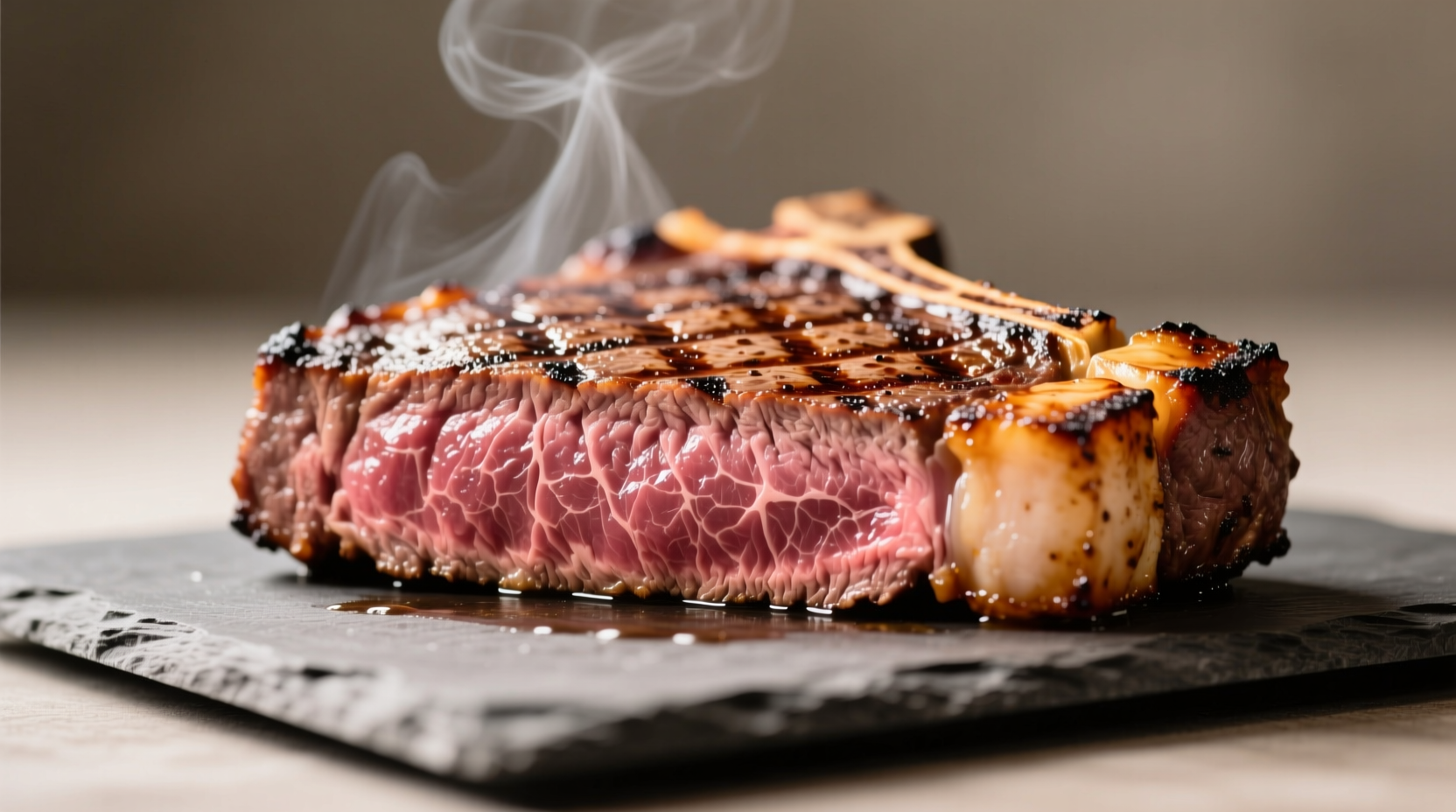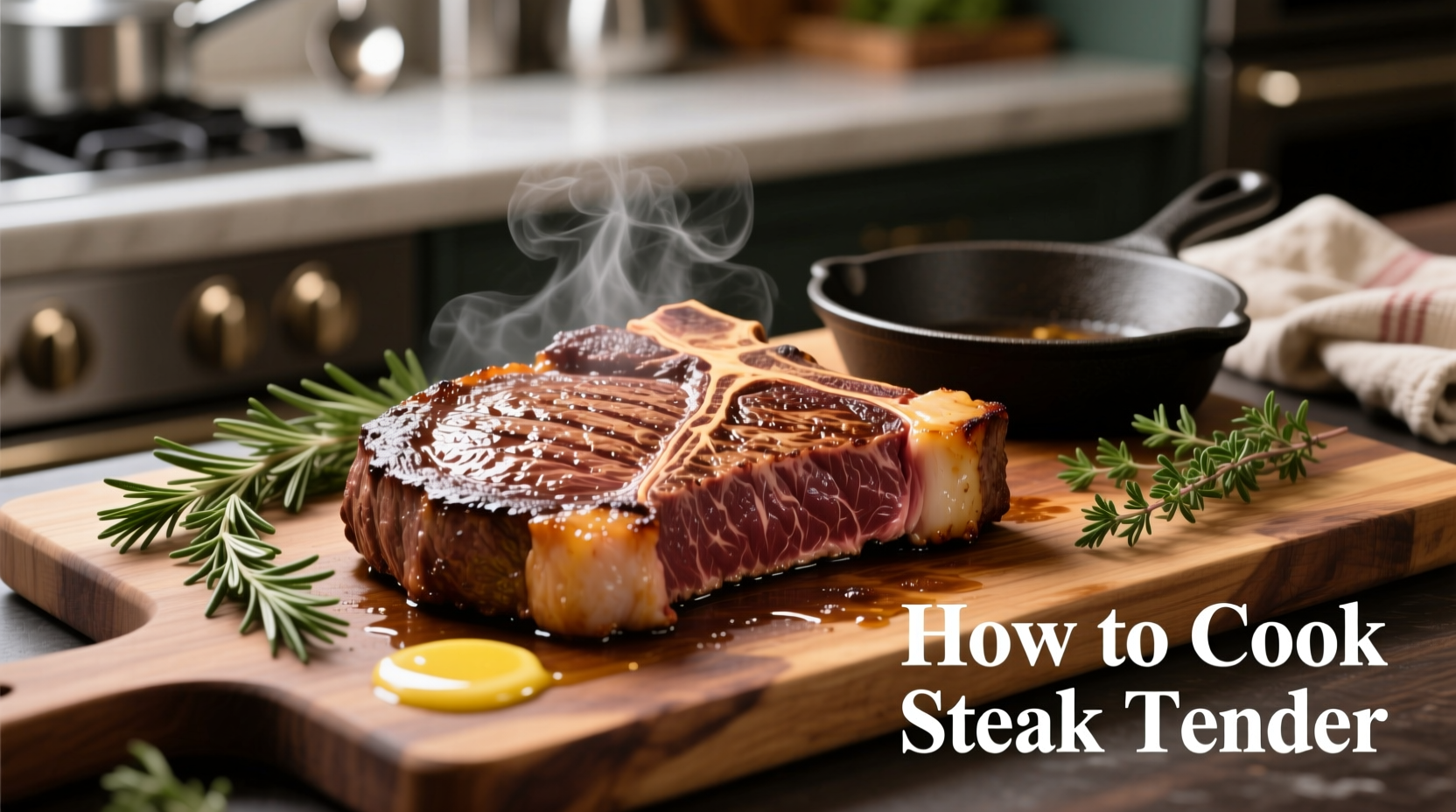Nothing compares to a perfectly cooked steak—juicy, flavorful, and melt-in-your-mouth tender. Yet many home cooks struggle with tough, chewy results despite following basic instructions. The secret isn't complicated equipment or exotic ingredients; it's understanding the science of meat fibers and applying proven techniques at each stage of preparation. This guide reveals the exact process professional chefs use to guarantee tender steak every time, whether you're working with an affordable flank steak or a premium ribeye.
Why Your Steak Turns Out Tough (And How to Prevent It)
Steak tenderness depends on three critical factors: muscle fiber structure, connective tissue content, and cooking technique. When muscle fibers contract due to heat, they squeeze out moisture and tighten. Overcooking accelerates this process, turning your steak into a dry, chewy disappointment. Understanding this biological reaction is the first step toward consistently tender results.
| Steak Cut | Natural Tenderness Level | Best Cooking Method | Recommended Doneness |
|---|---|---|---|
| Filet Mignon | ★★★★★ | Pan-sear + oven finish | Medium-rare (130°F) |
| Ribeye | ★★★★☆ | Reverse sear | Medium (135°F) |
| New York Strip | ★★★☆☆ | Pan-sear | Medium-rare (130°F) |
| Flank Steak | ★☆☆☆☆ | High-heat grill | Medium-rare (125°F) |
Selecting the Right Cut for Maximum Tenderness
Not all steaks are created equal when it comes to tenderness. Cuts from less exercised muscle groups—like the loin and rib sections—contain less connective tissue and more marbling, naturally yielding tender results. The USDA Meat and Animal Science department confirms that intramuscular fat (marbling) directly correlates with perceived tenderness in cooked beef.
Top tender cuts:
- Filet mignon (tenderloin): Extremely tender but mild flavor—ideal for those who prioritize texture
- Ribeye: Rich marbling provides both tenderness and robust beefy flavor
- Porterhouse/T-bone: Combines tender filet with flavorful strip steak
For tougher cuts like flank or skirt steak, proper preparation becomes critical. These cuts benefit from acid-based marinades (using ingredients like vinegar or citrus) which help break down tough muscle fibers, as documented in USDA Agricultural Research Service studies on meat tenderization.
Preparation: The Foundation of Tender Steak
Proper preparation starts hours before cooking. Remove your steak from refrigeration 45-60 minutes before cooking to bring it to room temperature. This critical step ensures even cooking—cold meat straight from the fridge causes the exterior to overcook while waiting for the center to reach proper temperature.
Seasoning properly enhances tenderness through osmosis. Apply kosher salt (¼ teaspoon per pound) at least 40 minutes before cooking, allowing it to dissolve and penetrate the meat. This process helps retain moisture during cooking, as explained in Harold McGee's On Food and Cooking, the definitive food science reference used by culinary professionals worldwide.

Cooking Methods That Guarantee Tenderness
The cooking method you choose directly impacts tenderness. For steaks thicker than 1.5 inches, the reverse sear method produces superior results:
- Preheat oven to 225°F (107°C)
- Place steak on wire rack over baking sheet
- Cook until internal temperature reaches 115°F (46°C) for medium-rare
- Heat cast-iron skillet until smoking hot
- Sear steak 60-90 seconds per side for perfect crust
This technique prevents the gray band of overcooked meat that forms with traditional searing. For thinner cuts (under 1 inch), direct high-heat cooking works best. The American Meat Science Association confirms that rapid searing at 400-450°F creates the ideal Maillard reaction without excessive moisture loss.
Precision Temperature Control: The Tenderness Threshold
Temperature control separates tender steak from tough disappointment. As meat heats, muscle fibers contract and squeeze out moisture. The critical threshold occurs around 130°F (54°C)—beyond this point, tenderness decreases rapidly.
| Doneness Level | Internal Temperature | Texture Result |
|---|---|---|
| Rare | 120-125°F (49-52°C) | Cool red center, extremely tender |
| Medium-rare | 125-130°F (52-54°C) | Warm red center, optimal tenderness |
| Medium | 130-135°F (54-57°C) | Warm pink center, still tender |
| Medium-well | 140-145°F (60-63°C) | Small amount of pink, beginning to toughen |
| Well-done | 150°F+ (66°C+) | No pink, significantly toughened |
Always use an instant-read thermometer for accuracy—guessing leads to overcooking. The USDA Food Safety and Inspection Service recommends these temperatures for both safety and quality, with medium-rare being the sweet spot for maximum tenderness without compromising food safety.
The Critical Resting Period: Why You Can't Skip It
Resting allows redistributed juices to be reabsorbed into the meat fibers. Cutting immediately after cooking causes precious juices to spill onto your cutting board rather than remaining in the steak. For optimal results:
- Thinner steaks (under 1 inch): Rest 5 minutes
- Thicker steaks (1-1.5 inches): Rest 7-8 minutes
- Very thick steaks (over 1.5 inches): Rest 10 minutes
Cover loosely with foil during resting—tightly wrapping causes steam buildup that softens your beautiful crust. This resting timeline comes from research published in the Journal of Food Science, which measured juice retention at various resting intervals.
Slicing Technique: The Final Tenderness Factor
How you slice your steak affects perceived tenderness more than many realize. Always cut across the grain—perpendicular to the muscle fiber direction. This shortens the long muscle fibers, making each bite easier to chew.
To identify the grain direction, look for the parallel lines of muscle fiber running through the steak. For cuts like flank or skirt steak with pronounced grain, slicing at a 45-degree angle across the grain maximizes tenderness. This technique is particularly crucial for naturally tougher cuts, as documented in culinary textbooks from the Culinary Institute of America.
Troubleshooting Tough Steak: Common Mistakes and Fixes
Even with careful preparation, things can go wrong. Here's how to address common tenderness issues:
- Overcooked steak: Thinly slice against the grain and serve with a flavorful sauce to add moisture
- Undercooked but tough: Return to heat for brief increments while monitoring temperature
- Uneven cooking: Next time, ensure proper room temperature equilibration before cooking
- Dry texture: Consider marinating tougher cuts next time with acidic components
Remember that some cuts simply won't achieve filet mignon tenderness due to their natural muscle structure. Managing expectations based on your chosen cut prevents disappointment.
Advanced Tenderizing Techniques for Tougher Cuts
When working with naturally tougher cuts like flank or hanger steak, additional techniques can enhance tenderness:
- Enzymatic tenderizing: Use kiwi, pineapple, or papaya in marinades (limit to 30 minutes to avoid mushiness)
- Mechanical tenderizing: Lightly score the surface with a sharp knife before cooking
- Dry brining: Salt steak 24 hours before cooking for deeper moisture retention
These methods work by breaking down collagen and muscle fibers through different mechanisms. The effectiveness varies by cut—ribeye responds poorly to enzymatic tenderizing while flank steak benefits significantly, as shown in comparative studies from the American Association of Meat Processors.











 浙公网安备
33010002000092号
浙公网安备
33010002000092号 浙B2-20120091-4
浙B2-20120091-4